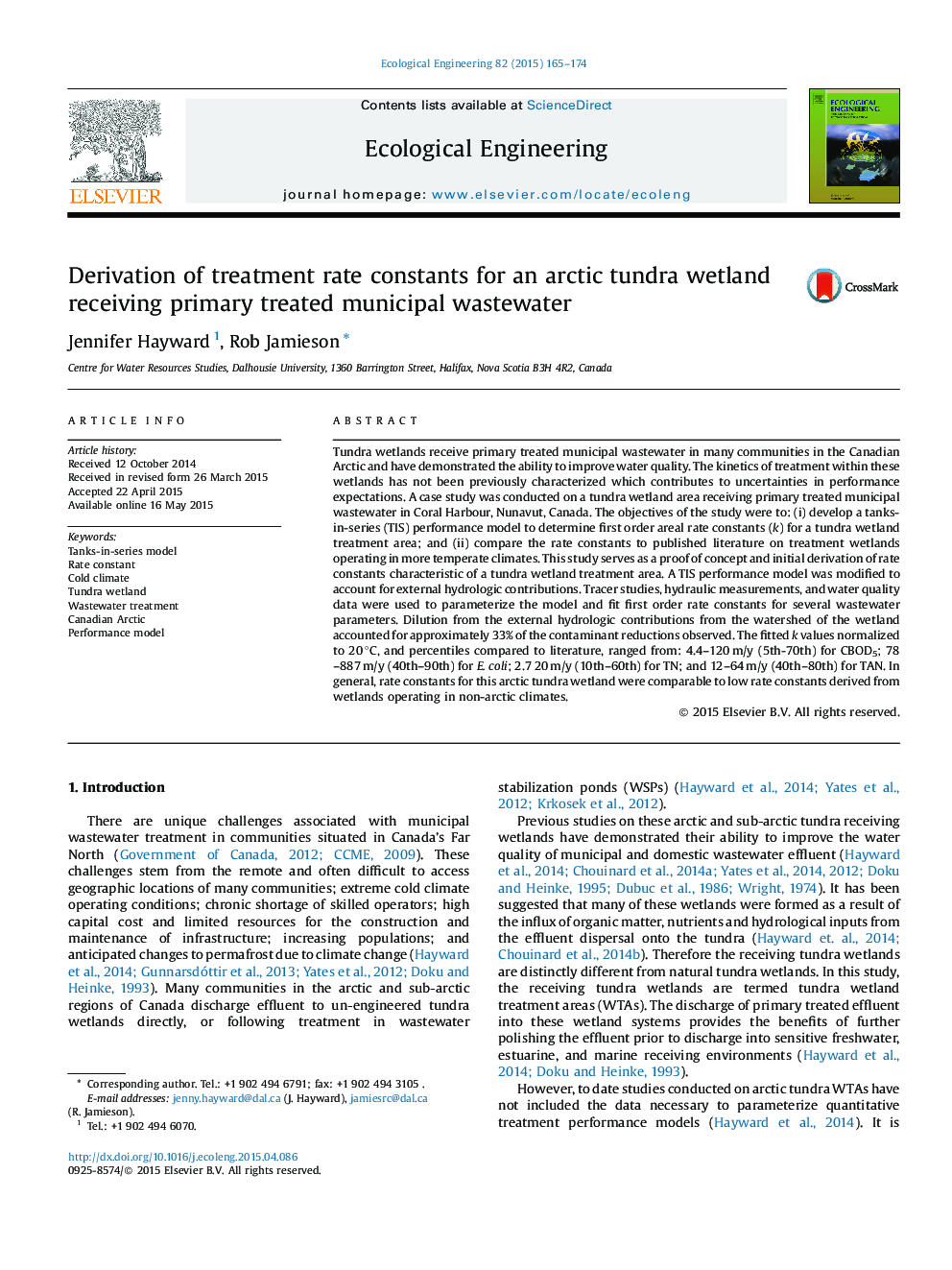| کد مقاله | کد نشریه | سال انتشار | مقاله انگلیسی | نسخه تمام متن |
|---|---|---|---|---|
| 4388960 | 1618017 | 2015 | 10 صفحه PDF | دانلود رایگان |
Tundra wetlands receive primary treated municipal wastewater in many communities in the Canadian Arctic and have demonstrated the ability to improve water quality. The kinetics of treatment within these wetlands has not been previously characterized which contributes to uncertainties in performance expectations. A case study was conducted on a tundra wetland area receiving primary treated municipal wastewater in Coral Harbour, Nunavut, Canada. The objectives of the study were to: (i) develop a tanks-in-series (TIS) performance model to determine first order areal rate constants (k) for a tundra wetland treatment area; and (ii) compare the rate constants to published literature on treatment wetlands operating in more temperate climates. This study serves as a proof of concept and initial derivation of rate constants characteristic of a tundra wetland treatment area. A TIS performance model was modified to account for external hydrologic contributions. Tracer studies, hydraulic measurements, and water quality data were used to parameterize the model and fit first order rate constants for several wastewater parameters. Dilution from the external hydrologic contributions from the watershed of the wetland accounted for approximately 33% of the contaminant reductions observed. The fitted k values normalized to 20 °C, and percentiles compared to literature, ranged from: 4.4–120 m/y (5th-70th) for CBOD5; 78 –887 m/y (40th–90th) for E. coli; 2.7 20 m/y (10th–60th) for TN; and 12–64 m/y (40th–80th) for TAN. In general, rate constants for this arctic tundra wetland were comparable to low rate constants derived from wetlands operating in non-arctic climates.
Journal: Ecological Engineering - Volume 82, September 2015, Pages 165–174
